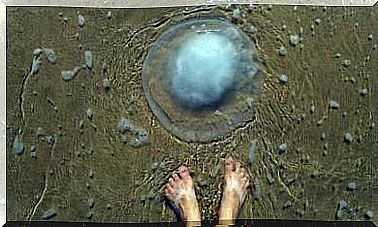Bacteriophage ϕ29
Margarita Salas was a Spanish biochemist who received the European Inventor Award in 2019. She dedicated most of her scientific career to the study of a bacteriophage virus called ϕ29 (phi29), which today has great biotechnological applications.
To give you an idea about what this virus is, the word bacteriophage comes from the combination of “bacteria” and “phage” (which means to eat, in Greek). Therefore, we are talking about viruses that “eat” bacteria.
Below we present, in the simplest way possible, the following information about the great discovery that Salas made about this acellular entity and its usefulness in the world of research.
Structure of a virus
A virus is a microscopic agent that infects many organisms, from animals, plants, and fungi to bacteria. Viruses do not have their own entity, that is, they depend on other cells to reproduce, that is why they are considered obligate parasites.
Inside it contains the genetic material, DNA or RNA, necessary to be able to encode its proteins, and it is externally surrounded by a capsule where the adhesion proteins that it will use to bind to the surface of other cells are located.
The term bacteriophage and its importance
Bacteriophages (or phages) are viruses that infect bacteria. On the one hand, there are those that integrate their genome into the host cell’s chromosome (lysogenic phages), providing the bacteria with genes that code for new proteins, and on the other hand, there are those that replicate within it, producing its subsequent lysis. (lytic phages).
Its use dates back to the 1920s, when Félix d’Herelle administered a phage to treat dysentery in a 12-year-old boy and the symptoms stopped until he recovered after a few days. Richard Bruynoghe and Joseph Maisin in 1921 treated a skin disease caused by Staphylococcus spp. with bacteriophages and the patients progressively improved between 24 and 48 hours. They have also been used to medicate thousands of people with cholera or the bubonic plague.
Today phage therapy is used in the food industry for the control of E. coli O157: H7 and in clinical practice for the treatment of infectious peritoneal diseases, external otitis or in the elimination of P. aeruginosa in people suffering from cystic fibrosis. .
Margarita Salas and the phage ϕ29
Margarita Salas, a graduate in biochemistry, has been one of the great scientists of Spain. She was a disciple of Severo Ochoa (Nobel Prize in Medicine), with whom she worked in the United States, and dedicated 45 years of her life to the study of phage ϕ29 during the sixties. He relied on three characteristics to make his project on this infectious agent:
- Its small size (20 genes).
- The complexity of its morphology.
- It was a phage about which little was known.
Phage ϕ29 is a lytic virus that belongs to the Podoviridae family . It is made up of a double-stranded DNA molecule and infects the bacterium Bacillus subtilis and other bacteria of the genus Bacillus .
This bacteriophage has been considered a study model in molecular biology for understanding the control of gene expression and different biological mechanisms, such as DNA replication (duplication).
Although Salas’s work was basic research, the discovery he made today has an important biotechnological application: the use of the phage ϕ29 DNA polymerase enzyme for DNA amplification.
To make it easier for you to understand this event, I tell you that enzymes are proteins that accelerate the chemical reactions that occur in all organisms. In this case, DNA polymerase performs DNA synthesis from a DNA that serves as a template.
But… What is DNA amplification?
DNA amplification is carried out by a procedure in the laboratory called PCR (Polymerase Chain Reaction), with which, from a small amount of DNA of interest, millions of copies of that sequence are obtained, facilitating its analysis. and identification. Its creator, Kary Mullis was awarded the Nobel Prize in Chemistry in 1993.
Salas’ discovery of the phage ϕ29 DNA polymerase enzyme allows amplification from much smaller fragments, even the size of a cell, with less than a million base pair error. This system is known as MDA (Multiple Displacement Amplification). In this way, DNA tests are faster and more reliable.
Finally, it should be noted that the technique that she invented has multiple applications in different scientific fields such as oncology, archeology and forensic medicine. For example, it enables the owner of a hair found at a crime scene to be identified and oncologists to approach small cell subpopulations that can give rise to tumors.
Margarita Salas dedicated her entire life to research. It is considered a benchmark in the world of science and its discovery will open many doors to new scientific advances.








